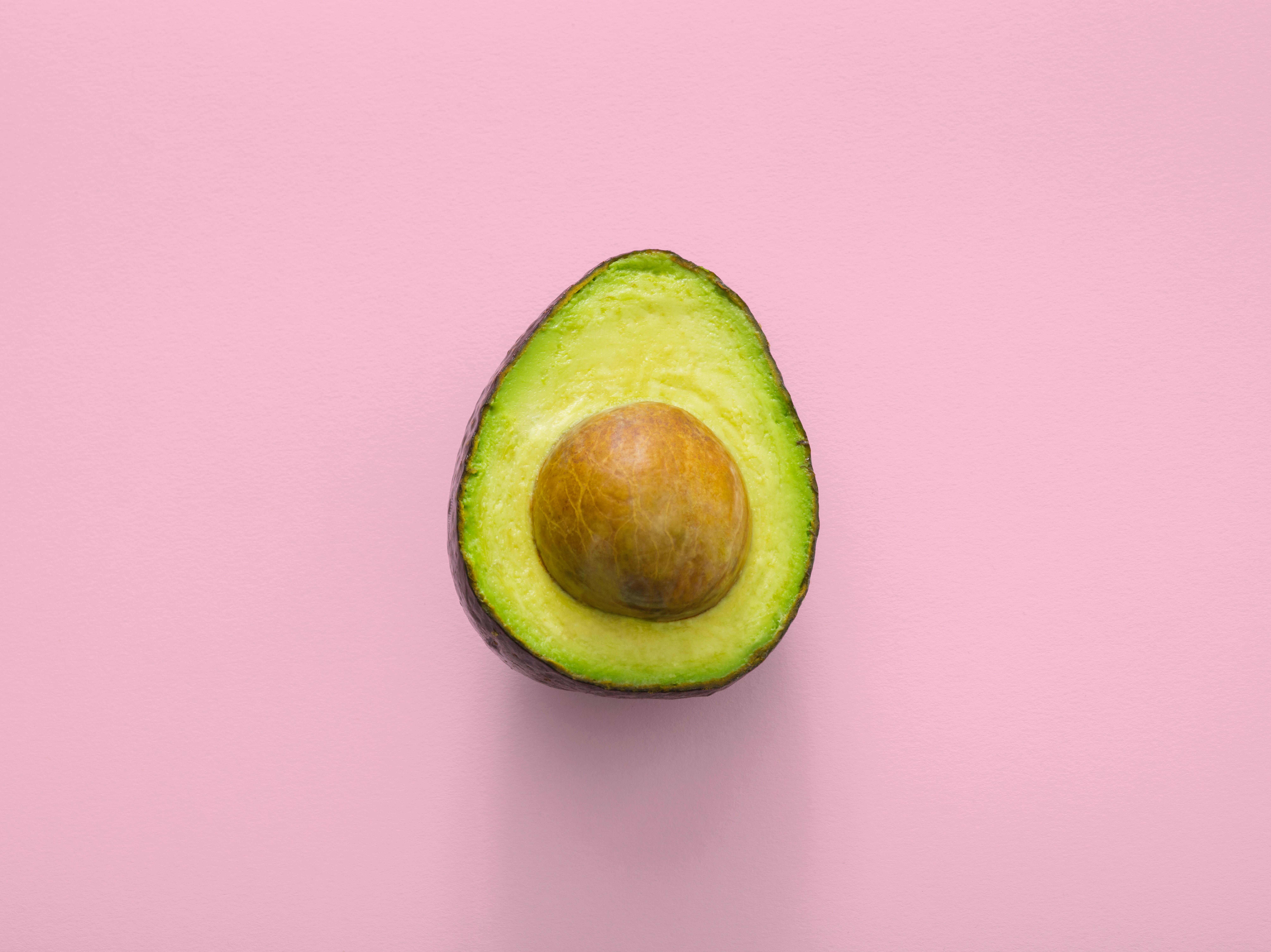Papaya is a tropical fruit native to Central America and Mexico. It is rich in vitamins, minerals, and antioxidants and has numerous health benefits. Papaya is an oval-shaped fruit with yellow-orange flesh and a sweet, musky flavor. The skin of the papaya can range from green to yellow. Papaya is most commonly eaten raw or juiced, but can also be cooked in various dishes. Many people enjoy adding papaya to salads, smoothies, desserts, sauces, and more for a unique flavor boost!Popular Fruits & Vegetables beginning with P are Papaya, Peach, Pineapple, Potato, Parsnip, Parsley and Peppers.
Potato Varieties
There are numerous varieties of potatoes that differ in shape, size, texture and colour. The most common types of potatoes are Russet, Yukon Gold, Red Potatoes and Fingerling Potatoes.
Russet potatoes have a thick, rough brown skin with white or light-yellow flesh. They are ideal for baking and mashing due to their high starch content. Yukon Gold potatoes have a golden-brown skin with yellowish flesh. They have a buttery texture and are great for boiling, roasting or steaming. Red potatoes have thin red skins with white or yellowish flesh. They are perfect for boiling and roasting as they hold their shape well after cooking. Fingerling potatoes have finger-like shapes and a waxy texture. They come in various colours such as pink, purple and yellow.
Cooking with Potatoes
Potatoes can be cooked in many ways such as baking, boiling, frying, grilling or mashing them. Baked potatoes are one of the most popular dishes made from this versatile vegetable. Boiled potatoes can be used for salads or mashed into creamy dishes like mashed potato or potato pancakes. Frying is another popular method used to make delicious snacks like french fries and chips. Grilling is also an option that adds smoky flavour to the dish while keeping it light and healthy.
Mashed potato is one of the most loved dishes around the world due to its versatility and creamy texture when combined with butter or cream cheese. It can also be mixed with other vegetables to make a delicious side dish or added to soups for extra flavour.
Nutrition Value of Potatoes
Potatoes are packed with essential vitamins and minerals such as vitamin C, potassium, iron and magnesium which help to maintain good health. They are also high in complex carbohydrates which provide long lasting energy throughout the day without any sugar rush associated with refined carbohydrates like white breads and pastas.
Overall, potatoes offer many nutritional benefits that make them an essential part of a healthy diet when eaten in moderation.
Pumpkin History
Pumpkins are believed to have originated in North America. The oldest evidence of pumpkin-related seeds dating back between 7000 and 5500 BC was found in Mexico. Native Americans used pumpkins as one of the main sources of food and were eating pumpkin in various forms for thousands of years before the arrival of the European settlers. Pumpkins were an important part of their diet, often stewed, roasted, or made into soup.
Pumpkin Nutritional Value
Pumpkins are highly nutritious and an excellent source of vitamin A, vitamin C, potassium and dietary fiber. They are also low in calories and contain no fat or cholesterol. Pumpkin is rich in beta-carotene and other powerful antioxidants that protect cells from damage caused by free radical molecules. Eating pumpkin can help reduce inflammation, which is linked to a variety of chronic diseases including heart disease and diabetes.
Uses Of Pumpkin
The most popular use for pumpkins is making jack-o’-lanterns for Halloween decorations. But there are many other uses for pumpkins as well. Pumpkins can be cooked into soups, stews, pies and breads; they can also be roasted or steamed. The seeds can be roasted as a snack or added to salads and other dishes for added flavor and nutrition. Pumpkins are also used to make natural dyes for fabrics; the orange color is perfect for fall decorations!
Health Benefits of Mango
Mangoes are one of the most popular and nutritious fruits in the world. They are a great source of vitamins, minerals, and antioxidants. Mangoes are a good source of dietary fiber, which helps reduce cholesterol levels and aids in digestion. Studies have shown that mangoes can help reduce the risk of certain types of cancer, as well as improve bone health. Additionally, mangoes are high in vitamin A and C, which can help boost your immune system.
Nutritional Value
Mangoes are packed with essential nutrients that can help keep you healthy. One cup of diced mango contains 107 calories, 1 gram of protein, 25 grams of carbohydrates, 3 grams of dietary fiber and 24 grams of sugar. It also provides 35 percent of your daily recommended intake for vitamin C and 12 percent for vitamin A. Mangoes are also a good source of potassium, magnesium, copper and folate.
Benefits Of Papaya
Papaya is an incredibly nutritious fruit that is rich in vitamins A and C as well as numerous antioxidants that can help boost your overall health. It has anti-inflammatory properties that can help with digestive issues such as constipation or irritable bowel syndrome. Papaya is also known to improve skin health due to its high level of vitamin A which helps to reduce wrinkles and acne. Additionally, papaya is known to improve heart health due its high level of antioxidants which help reduce cholesterol levels.
Nutritional Value
Papayas are a great source of nutrients with only 59 calories per cup but still providing three grams fiber and lots Vitamin C (157 percent daily value). Papayas also contain Vitamin A (33 percent daily value) , Vitamin E (15 percent daily value), potassium (12 percent daily value) , folate (11 percent daily value) , magnesium (8 percent daily value) , copper (7 percent daily value) , pantothenic acid (6 percent daily value).
Pea
Peas are green, round vegetables found in many gardens. They are a cool-season vegetable, meaning they prefer the cooler temperatures of spring and fall. Peas are available in several varieties, including garden peas, snow peas, and snap peas. Garden peas have a sweet flavor and can be eaten raw or cooked. Snow peas are flat and crunchy with a mild flavor and can be eaten raw or cooked. Snap peas are a combination of garden and snow peas with edible pods that can be eaten raw or cooked. Peas are an excellent source of vitamins A, B-6, C, K, fiber, folate, manganese, protein and zinc. They contain antioxidants which can help protect against heart disease and cancer. Peas also contain phytonutrients which have been linked to lower cholesterol levels. Peas can be enjoyed in salads, stir-fries, soups and casseroles for a healthy addition to any meal.

Garlic
Garlic is an essential ingredient in many dishes. It has a unique flavor that can’t be replaced by any other ingredient. It is full of antioxidants and can help reduce inflammation and boost immune system. Garlic also helps in lowering cholesterol and regulating blood sugar levels. It is also known to have antimicrobial properties, which makes it an excellent natural remedy for treating various conditions like colds, flu, and even some skin infections.
Onion
Onion is used in almost every cuisine around the world. Its unique flavor enhances the taste of the dish it is added to. Onions are high in vitamins and minerals such as Vitamin C, potassium, magnesium, folate, and fiber. They are also rich in antioxidants which help reduce inflammation and boost immunity. Onions have antiseptic properties that can help fight against bacteria and viruses.
Celery
Celery is a versatile vegetable that can be used in many dishes to add flavor and texture to them. It is packed with vitamins A, B6, C, K as well as minerals such as calcium, potassium, magnesium, phosphorus, and iron. Celery helps lower blood pressure levels because of its high potassium content. It also helps regulate digestion due to its high fiber content and helps strengthen bones due to its high calcium content.
Bell Pepper
Bell peppers are a great source of Vitamin A which aids with eye health and skin health while Vitamin C helps support the immune system and boosts collagen production for healthy skin cells. They are also rich in dietary fibers which help regulate digestion while providing essential vitamins and minerals such as potassium and copper that aid in good metabolism functioning. Bell pepper is low calorie vegetable with no fat or cholesterol making it an ideal snack for those looking to manage their weight while still getting enough nutrition from their food intake.
History and Origin
The parsnip is a root vegetable that originates from the Eurasian continent. It is believed to have first been cultivated in the Mediterranean region, and it was later brought to Britain by the Romans. Parsnips were a staple in European diets during the Middle Ages, and they remain an important part of many traditional dishes in Europe today. Parsnips are also popular in North America, where they are often used as a substitute for potatoes.
Culinary Uses
Parsnips can be cooked in many different ways. They can be boiled, mashed, roasted, or steamed. Parsnips can also be added to soups and stews for an extra boost of flavor. The root can also be eaten raw, although it is usually peeled before consumption due to its tough texture. When cooked correctly, parsnips are sweet and nutty in flavor.
Nutrition
Parsnips are rich in vitamins and minerals such as vitamin C, potassium, fiber, and folate. They also contain small amounts of protein and fat. Parsnips are low in calories but high in carbohydrates, so they should be consumed in moderation if you’re trying to lose weight.
Health Benefits
Parsnips are believed to have numerous health benefits due to their high nutrient content. They may help reduce inflammation, boost the immune system, improve digestion, lower blood pressure levels, and reduce the risk of certain cancers. Parsnips may also aid weight loss due to their low caloric content.
Health Benefits
Plums are rich in antioxidants and polyphenols, both of which can help to protect the body against a variety of diseases. They are also a good source of vitamin C, which can help boost the immune system and prevent common illnesses. Plums also contain fiber, which is important for digestion and can help to regulate blood sugar levels. They are also low in calories and fat, making them an ideal snack for those trying to maintain a healthy weight.
Nutritional Value
Plums are an excellent source of essential vitamins and minerals such as vitamin A, vitamin C, potassium, manganese, copper, iron, phosphorus, and magnesium. These nutrients can help support healthy bones, teeth, skin, hair, and nails. Plums also contain high amounts of dietary fiber which can help reduce cholesterol levels and support digestive health.
Uses
Plums can be eaten raw or cooked in a variety of dishes. They make a great addition to salads or desserts such as pies or cobblers. Plums can also be dried for use in trail mixes or granola bars. They make a delicious spread when combined with honey or jam. Plums can be juiced or blended into smoothies as well for added nutrition.

Conclusion
The humble potato is without a doubt an amazing fruit or vegetable beginning with ‘P’. It has been around for centuries, yet it still remains one of the most popular and versatile ingredients in many dishes. From mashed potatoes to French Fries, the potato can be used in countless creative ways. Furthermore, it is a great source of vitamins and minerals, making it an excellent choice for those who are looking to improve their health. All in all, the potato is a remarkable and nutritious ingredient that will continue to be enjoyed for generations to come.
In conclusion, whether you’re looking for something tasty or nutritious, you can’t go wrong with a potato. Its long history and many uses make it one of the best fruits or vegetables beginning with ‘P’. So next time you’re at the store, pick up some potatoes and get cooking!



